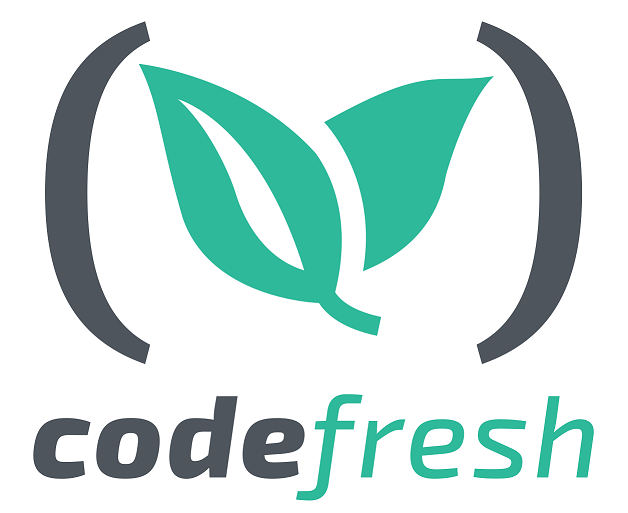Codefresh Integration

First time using Codefresh? Please refer to the following documentation.
Requirements
Access to docker daemon when running the Pipeline is mandatory. The Codefresh SaaS version does not provide access to this feature by default. Currently, the integration is only compatible with Hybrid type environments (with runners at the infrastructure itself) or fully on-premise. More information about the Code Fresh installation types can be found at Codefresh official documentation page.
First Steps
If you have at least one CodeFresh Runner installed at your on-premises infrastructure, you can create the first pipeline by interacting with Conviso Platform command line tool, [CLI]. If you do not have one yet, it is recommended that you read the Runner-related page in the official CodeFresh documentation.
Whereas the local Runner is the default Runtime Environment for your CodeFresh account, all pipelines that didn't have this property changed manually will have their builds performed on it. With that in mind, we can proceed to the creation of a first pipeline to better know Codefresh.
- At the main menu, click Pipelines;
- In the upper right corner, click New Pipeline;
- Select a project to be the test Pipeline. This Pipeline may be labeled as conviso_sample, as we will refer to it hereafter;
- In this first run, no source code association is required, so the Add Git Repository option may remain disabled;
- By clicking on Create, the page will be directed to the Workflow tab of the Pipeline, where Codefresh generates an example of a pipeline to be executed. We will not use that example now; copy and paste the code below into the YAML editing window;
version: "1.0"
stages:
- "test"
steps:
conviso_sample:
title: "CLI Hello"
type: "freestyle"
image: "convisoappsec/convisocli"
commands:
- "conviso --help"
stage: "test"
- Click Save and then click Run. In the Trigger modal that will be opened, click Run again;
- The pipeline execution process will start. At the end of the build, the expected result is the output of the tool's help command:
Executing command: conviso --help
Usage: conviso [OPTIONS] COMMAND [ARGS]...
Options:
-k, --api-key TEXT The api key to access conviso resources. [env var: FLOW_API_KEY]
-u, --api-url TEXT The api url to access conviso resources. [env var: FLOW_API_URL; default: https://app.convisoappsec.com]
-i, --api-insecure HTTPS requests to untrusted hosts is enable. [env var: FLOW_API_INSECURE; default: False]
-h, --help Show this message and exit.
-v, --version Show the version and exit.
Commands:
deploy
finding
sast
sca
Run conviso COMMAND --help for more information on a command.
Successfully ran freestyle step: CLI Hello
Variables Setup
Authentication between CLI and the Conviso Platform is done using an API key. To do it safely, it is recommended to use the Variables of Pipeline. Those variables can be defined by Pipeline or by anything else at the account scope (valid for all projects), via Shared Configuration. The second option is more advantageous if there is interaction with the tool in more than one project and/or pipeline.
Pipeline Variables Setup
At the right corner of pipeline editing screen, there is a menu with Steps, Triggers, Variables and Help options.
- Click Variables, then Add Variable;
- At Key field, input the variable name:
CONVISO_API_KEY; - At Value field, paste the Conviso Platform API key value. To generate a key, follow this guide.
- After pasting the API key at the Value field, you will notice a padlock with the Encrypt option. Click the Encrypt option and confirm.
Account Variables Setup
To create global variables, the user must have account administrator privileges.
- At the main menu on the left, select Settings section and click Account Settings;
- At the Configuration section, click Shared Configuration;
- Click Add Shared Value. If you already have other contexts, click Add Configuration Context;
- Select Shared Secret option and label it as Conviso;
- At the Key field, input the variable name:
CONVISO_API_KEY; - At the Value field, paste the Conviso Platform API key value. To generate a key, follow this [guide];
- Click Add variable and then Save.
It is also necessary to import the variable context created above, labeled Conviso in each pipeline that will be used. To accomplish that, use the guidelines that follow:
- At the desired pipeline editing menu, click Variables at the menu on the right;
- Click Open advanced options gear icon, and then click Import from shared configuration;
- Select the earlier created Conviso context and then click Add;
- Once it has been done, a new section called Conviso at Variables will be shown, containing passwords inherited from this context.
After fully completing the above tasks, the API key will be available in the pipeline execution context and every action that requires authentication with the platform is already pre-configured.
Notice that if we hadn't configured it that way, every command that require authentication would also require the -k option with the API key value, as shown by the --help option at first execution.
Let us configure Codefresh pipeline in order to run Conviso AST:
The following code snippet will trigger an AST scan and send the results to Conviso Platform:
conviso_sample:
title: "Conviso AST"
type: "freestyle"
image: "convisoappsec/convisocli"
commands:
- "conviso ast run --vulnerability-auto-close"
stage: "test"
working_directory: "/codefresh/volume/${{CF_REPO_NAME}}"
